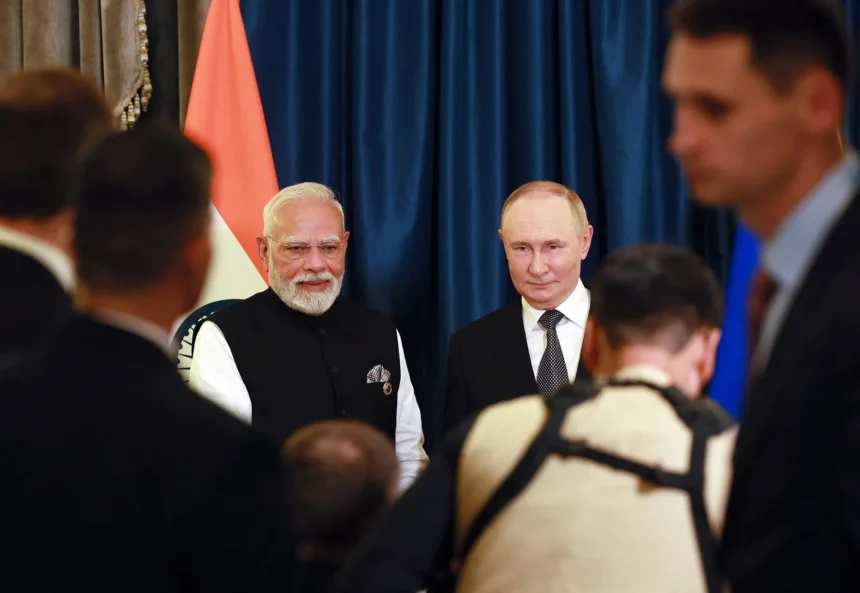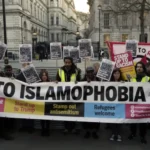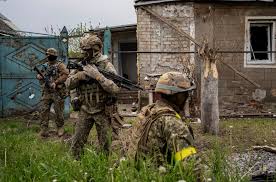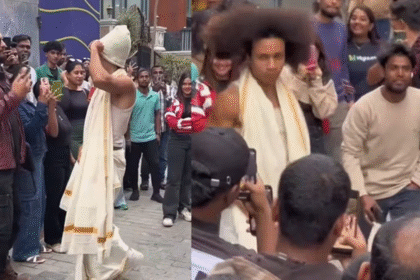Modi and Putin’s Emerging Bond: From SCO Summit to Aurus Limo Diplomacy in Tianjin
New Delhi: On the final day of his China visit, Prime Minister Narendra Modi appeared from public visuals to be constantly in Russian President Vladimir Putin’s company – clasping hands in the SCO summit hall, chatting for an hour inside a Russian armoured limousine and then sitting down for another hour of formal talks.
The images were aimed at more than one audience: the White House and television channels back home.
The day began with Modi walking into the ornate hall of the 15th Shanghai Cooperation Organisation summit hand-in-hand with a smiling Putin. He let go only to greet Chinese President Xi Jinping, forming a circle with the two leaders. As they exchanged a few words, Putin motioned to a Chinese translator to step in, prompting other interpreters to follow.
Modi let out a large laugh, as the trio held hands. The tableau recalled pre-pandemic images of Modi flanked by Putin and Xi, clasping their hands together. It was an orchestrated display of camaraderie and alignment among the leaders of China, India and Russia, serving both geopolitical messaging and a narrative of solidarity.
The smiles may have resembled earlier times, but the strategic context in which they played out has shifted significantly. Since then, India-China ties have been frozen by a Himalayan military standoff that left at least 24 soldiers dead, while Russia has moved steadily closer to Beijing in the wake of its clashes with the West over Crimea and the war in Ukraine.
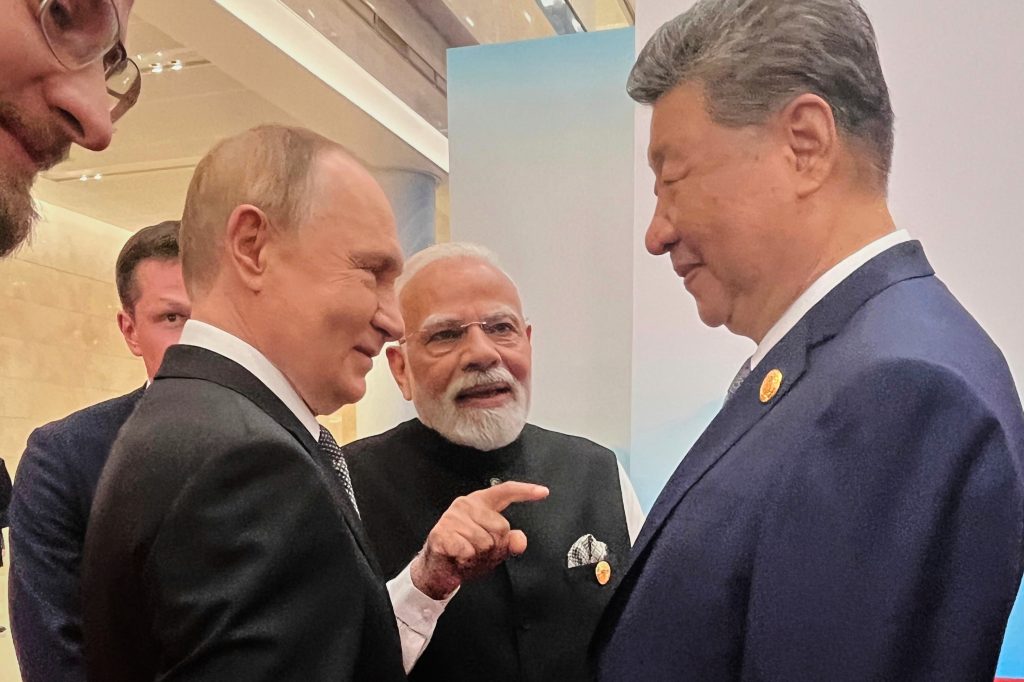
At the same time, New Delhi’s closer alignment with Washington has been evident to both Moscow and Beijing. But Donald Trump’s return to the White House has unsettled that equation, with his administration targeting New Delhi with sweeping tariffs of 50% on Indian goods.
In August, the US doubled its duties on Indian goods to 50%, combining a 25% “reciprocal” tariff with a 25% penalty for Indian oil imports from Russia, one of the world’s largest energy suppliers.
Against this backdrop, Modi’s extended public engagement with Putin was crafted to show that he remained a player with influential partners. On his social media timeline, he posted about Putin four times, sharing photos of their embrace and their huddle with Xi.
After the SCO plenary, the two leaders moved to their scheduled bilateral talks. Running late, they stepped into Putin’s Russian-made Aurus presidential limousine, flown in for the visit.
What was meant to be a short drive to the Ritz-Carlton in Tianjin stretched into nearly an hour, as the conversation continued even after the car had stopped.
“Conversations with him are always insightful,” posted Modi on X.
Kremlin spokesperson Dmitry Peskov later explained that Putin and Modi had remained inside the Aurus for close to 50 minutes because “when there is an important discussion, there is simply no time to be distracted by walking or moving around.” He added, with a smile, that the “familiar surroundings” of the vehicle also played a part in why the leaders chose to continue their one-on-one exchange there.
Also read: After June Rebuff, India Backs SCO Statement Condemning Israeli, US Strikes on Iran
According to the official Kremlin transcript, Putin told Modi at the start of the formal delegation level talks in the hotel that “trade and economic ties are showing a positive trend overall”.
Russia and India, he stressed, had maintained “special relations for decades – friendly and based on trust,” and these ties were “non-partisan” in nature, supported by the majority of both peoples.
Modi was effusive that any meeting with Putin was “always an occasion to remember”. “140 crore Indians are eagerly waiting to welcome you for our 23rd Summit in December this year,” he said, reminding of their annual summit.
Bilateral trade had risen more than five-fold in four years, from USD 13 billion in 2021 to USD 68 billion in 2024-25, on the back of ballooning oil purchases.
As part of a wider round of outreach to leaders he stays in touch with, Putin phoned Modi twice in August, before and after his Alaska summit with Donald Trump.
While welcoming the US-Russia talks, Modi said, “We hope that all parties shall proceed ahead constructively. A way must be found to end this conflict and establish lasting peace”. Then, he added, “This is the aspiration of entire humanity”.
These kinds of one-liners have often shaped India’s public diplomacy on Ukraine. In Moscow last year Modi said, “There is no solution on the battlefield.”
At Samarkand in 2022, he had declared that it was “not an era for war.”
There was no sign of the message of “immediate ceasefire” that Ukrainian President Volodymyr Zelensky had claimed would be conveyed by Modi to Putin.
Hours after the Tianjin meeting, Trump wrote on Truth Social that “India buys most of its oil and military products from Russia, very little from the US,” calling trade with India a “totally one-sided disaster.” He claimed New Delhi had now offered to cut tariffs to nothing, but that “it’s getting late.”
While India’s government avoided a direct response, oil minister Hardeep Puri defended Russian crude purchases as stabilising global prices. Writing in The Hindu on the eve of the Modi-Putin meeting, he dismissed a Trump aide’s description of India as a “laundromat” for Moscow: “Nothing could be further from the truth.”
Also Read: UK Muslims Face Vandalism and Attacks Amid Rising Tensions Over Flag Campaign


